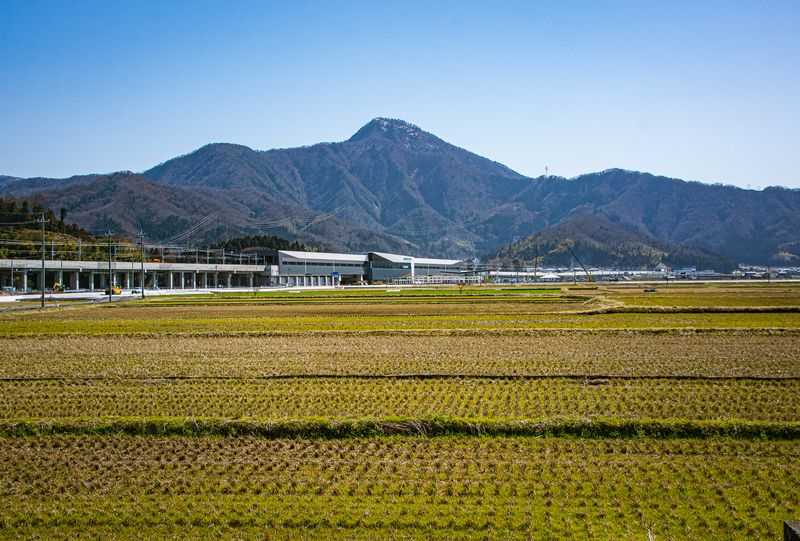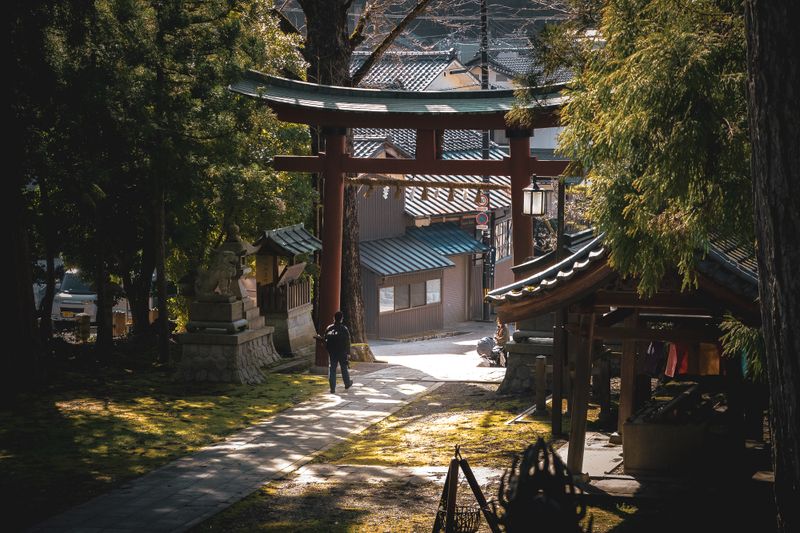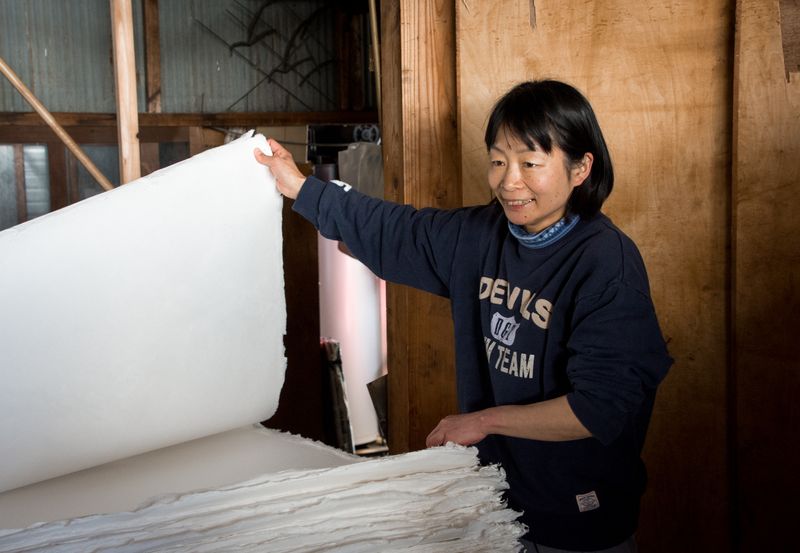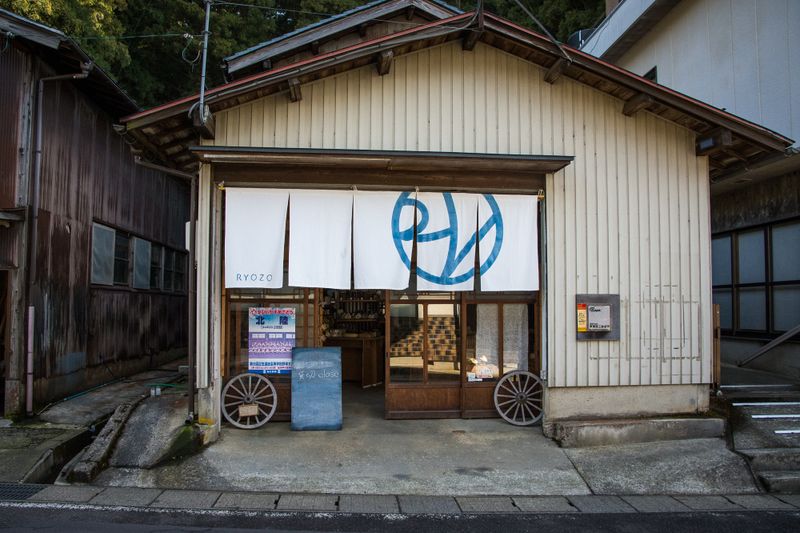Apr 20, 2023
Fukui’s old traditions, temples await new arrivals with shinkansen extension
Facing the waters of Tsuruga Bay, the exterior of the Port of Humanity Tsuruga Museum features restored buildings from the Taisho (1912-1926) and early Showa (1926-1989) eras, including Tsuruga Port Station and the old Customs Luggage Inspection Station, both of which remain in their original locations.
There appears to be little luggage requiring inspection at the port in Fukui Prefecture, central Japan, these days.
From the late-19th to early-20th century, however, Tsuruga Port was a transportation hub that connected Japan with Western Europe. With the completion of the Trans-Siberian Railway and ships offering passage between Russia’s easternmost city of Vladivostok and Tsuruga, the Euro-Asian Railway made travel from Tokyo all the way to Paris possible on a single ticket.
Among the travelers coming from the other direction to arrive at Tsuruga’s port in the 1920s were Polish orphans rescued from Russian Siberia and later Jewish refugees fleeing the horrors of 1940s Europe. Japanese authorities granted them visas for life. Their stories are told in the Port of Humanity Tsuruga Museum.
Today the port appears calm, even the ships of the Japan Coast Guard seem comfortably at rest.
A short distance inland though, things are stirring in Tsuruga. The city is to become the final stop (for the time being) on the latest extension to the Hokuriku Shinkansen route, set for completion in March 2024. Soon it will be possible to arrive here, and elsewhere in Fukui Prefecture, on a single ticket from Tokyo once again.
The shinkansen extension is on everyone’s lips in these parts. Checking into a business hotel on the outskirts of Tsuruga during a visit to the region in October, an old laborer staying at the hotel greeted me in the lobby and before anything else asked if I was in town for the shinkansen extension.
Not for it perhaps, but because of it. The in-coming shinkansen, over 10 years in the making, has ostensibly been behind a number of visits I’ve made to the region over the last few years. And it hasn’t even arrived yet. When it does, perhaps the blurry-eyed crack-of-dawn departures from Tokyo will become a thing of the past.
Five stations in Fukui Prefecture will service the 125-km extension of the Hokuriku Shinkansen route between Kanazawa City in neighboring Ishikawa Prefecture and Tsuruga.
One of the stations, Echizen-Takefu, will afford travelers from as far away as Tokyo one-stop access to a region of Fukui Prefecture celebrated as a production center for a number of Japan’s traditional crafts.
The sleek new station facility makes for an interesting sight. There is no sign of the high-rise business hotels or expansive shopping malls that one might associate with other shinkansen stations. Instead, Echizen-Takefu sits against a mountain backdrop and fronts a yawning expanse of rice fields. A michi no eki roadside rest area and farmers' market adjacent to the station opened in March.

(Echizen-Takefu station, Fukui Prefecture. Photo taken March 2023.)
A short drive east of Echizen-Takefu station brings travelers to the production center of Echizen washi, a traditional Japanese paper often seen in fusuma sliding doors. The area of quaint buildings, narrow streets, and trickling streams is home to a number of largely family-run paper mills whose collective output accounts for around 20 percent of Japan’s market of handmade washi.
Despite their significant market share and a production history that dates back around 1,500 years, shortages in raw materials, in particular kozo mulberry bark from Tochigi Prefecture, and the effects of the pandemic are being felt among some of the papermakers.

(The grounds of Okamoto-Otaki Shrine, dedicated to the goddess of paper, Kawakami Gozen, Echizen City, Fukui Pref. Photo taken March 2023.)
Masami Igarashi is a craft master at Igarashi Papermill, which has been in business for over 100 years. In the face of the raw material shortages Igarashi’s papermill recently launched a new brand of washi called Food Paper, made from a combination of kozo and discarded fruits and vegetables.
The idea to make paper from food came from Igarashi’s son who tested it over a period of five years as part of an elementary school project.
“A lot of Japanese people will throw away fruits and vegetables even if the shape is not right or if it is just scratched,” Igarashi told us during a visit to the papermill in March.
“We’ve also started working with juice and green tea manufacturers, using their unused ingredients to make washi which they then use as paper for their business cards and for wrapping.”

(Masami Igarashi of Igarashi Papermill, Echizen City, Fukui Pref. Photo taken March 2023.)
Igarashi hopes the arrival of the shinkansen will help to put washi and brands like Food Paper in front of new audiences and increase opportunities for growth.
“The shinkansen will create more opportunities for people to come directly to our production facilities, and the more people who visit us the more people will become fans of washi. So this could be a business chance for us,” she said.
Nearby, washi maker Yanase Ryozo Seishijo offers visitors a chance to try their hand at making kanagata rakusui-shi, a rare kind of washi the production of which involves pressing a pattern onto a wet sheet of paper using a metal mold. Water is sprayed over the mold in order to transfer the pattern onto the paper underneath.
This is perhaps the easier part for beginners. It follows the rather tricky business of using a sugeta to create the sheet of paper. The sugeta - a kind of screen attached to a hinged frame - is dipped into a vat of cold paper pulp, lifted and tilted with great care to spread the pulp, drain the excess and, hopefully, create something resembling a sheet of washi.
It takes some getting used to and is the kind of labor-intensive practice that makes kanagata rakusui-shi something of a rarity. The arrival of the shinkansen, though, could mean more visitors getting intimate with the paper and the processes behind it, and returning home with a sheet of kanagata rakusui-shi of their own.
“It’s a chance. A chance for people to know about washi,” said craftswomen Kyoko Yanase of the arrival of the shinkansen.
“Originally we were a commercial production area so we had interactions about washi with business reps but not really with anyone else. It was almost as if we didn't know what happened to the paper after it was delivered,” she said.
“I think the shinkansen will be a chance for different people to learn about washi, a chance to spread the culture.”

(Facility of Yanase Ryozo Seishijo, Echizen City, Fukui Pref. Photo taken March 2023.)
The shinkansen and Echizen-Takefu station will be able to deliver visitors to what is a relatively compact area, home to not only washi makers but other traditional craft makers that include those producing uchihamono forged knives and lacquerware.
Beyond Echizen, however, the attractions of Fukui are spread across the prefecture.
Pierre-Hubert Leroux has been living and working in Fukui Prefecture since 2019. A native of Montreal, Canada, Leroux works in the prefectural government’s PR and tourism divisions, spreading word of the region’s appeal.
“Eiheiji is one of my personal favorites,” Leroux said when we asked him about what he would like visitors to experience in the region when the shinkansen arrives, if not before. The 13th-century temple of Daihonzan Eiheiji, set in the mountains east of Fukui City, is one of two head temples for the Soto sect of Zen Buddhism in Japan, and an important center for Zen worship.
“But it really depends on where you are from,” Leroux said.
“For me and my friends from Canada, what I feel like I really want them to experience first is the whole Zen legacy that’s well alive today. Not only at Eiheiji but at other temples, and not only the temples but also through the traditional crafts.”
“I personally like the traditional crafts, and I use them in my daily life here and there. I like how you can go to these little studios. Each one is so unique,” he said.
From Eiheiji in the north, through the craft production hub of Echizen, and on south to the fishing villages and coastal attractions around the old Wakasa-kaido trading route, the visitor to Fukui Prefecture has plenty of choice but also plenty of distance to cover.
When the Hokuriku Shinkansen arrives, the experience it will help to deliver to both visitors and prefecture will likely differ from that which it helped bring to Ishikawa Prefecture when it first arrived in the city of Kanazawa in 2015.
Fukui Prefecture arguably lacks the kind of plug-in-and-play experience that Kanazawa can provide for shinkansen visitors - a one-stop destination offering marquee attractions that can be covered on foot or in a few minutes at a time by bus.
With a variety of attractions in a variety of locations there is work ahead for the authorities in Fukui to further develop “nijikoutsu,” or secondary public transportation, in order to get visitors around the attractions.
“So the shinkansen is coming and you’re at the station, how do you get to other places? This is something they are working on very hard,” Leroux said.
In the meantime though, the future looks exciting for Fukui and for visitors to the region - without a well-worn path of least resistance for the traveler to fall into a greater sense of discovery awaits. And wherever the traveler lands here they can be sure of a warm welcome, just like the arrivals in the late-19th and early-20th century could attest to.
Related
JAPAN’s next TOP TRAVEL DESTINATION? Traveling through Fukui & the Hokuriku Sanken
Ainokura’s gassho-zukuri residents share stories of the way things used to be



0 Comments